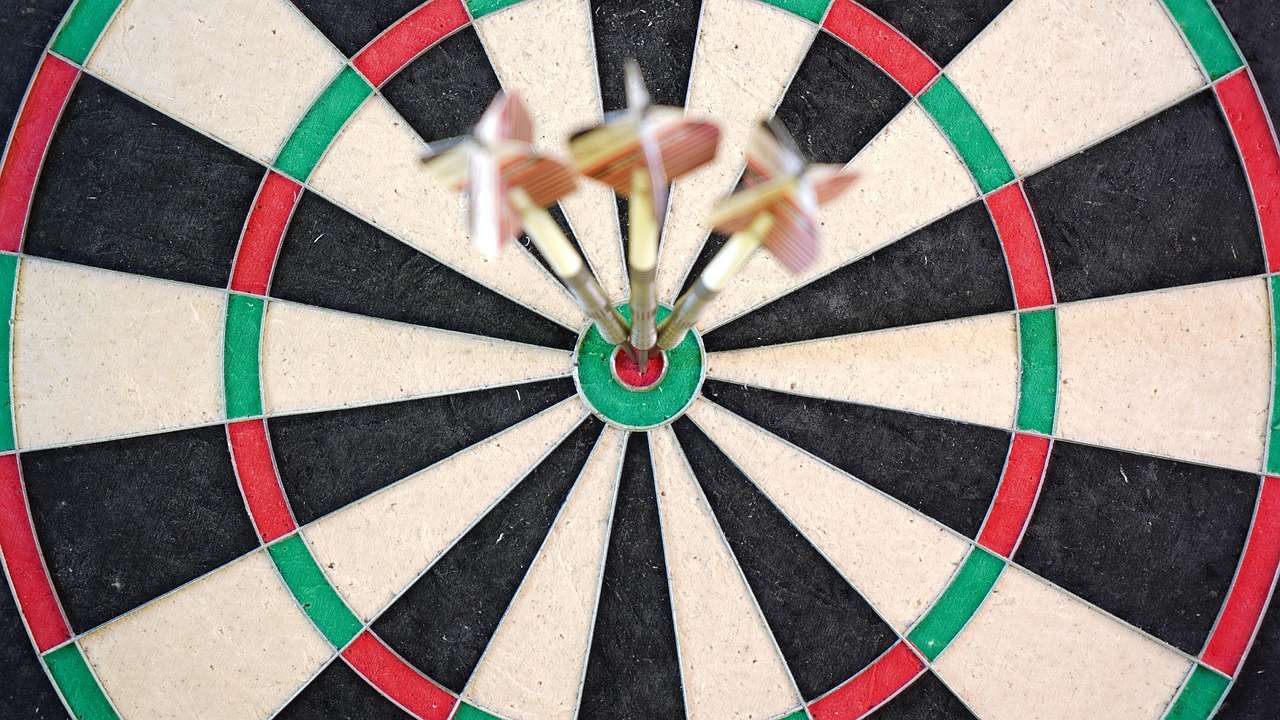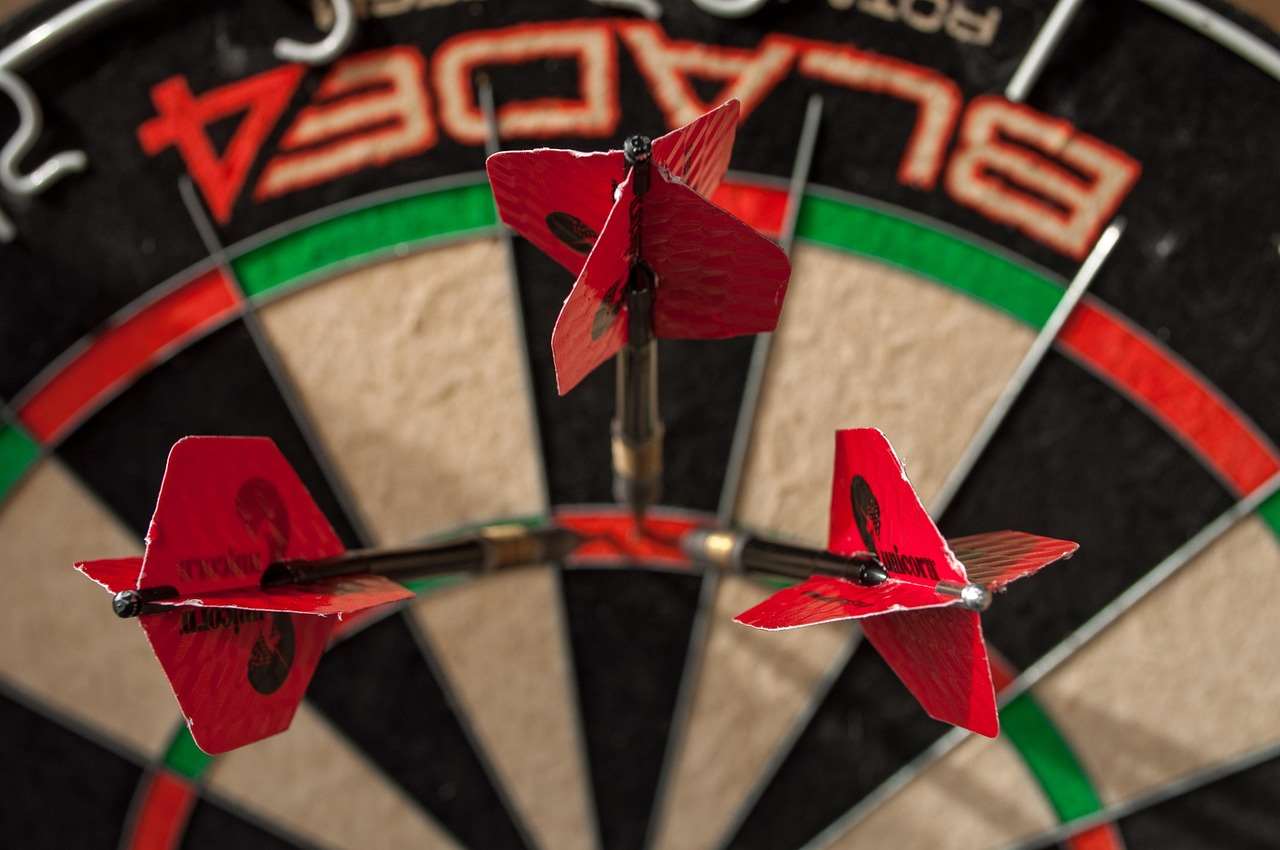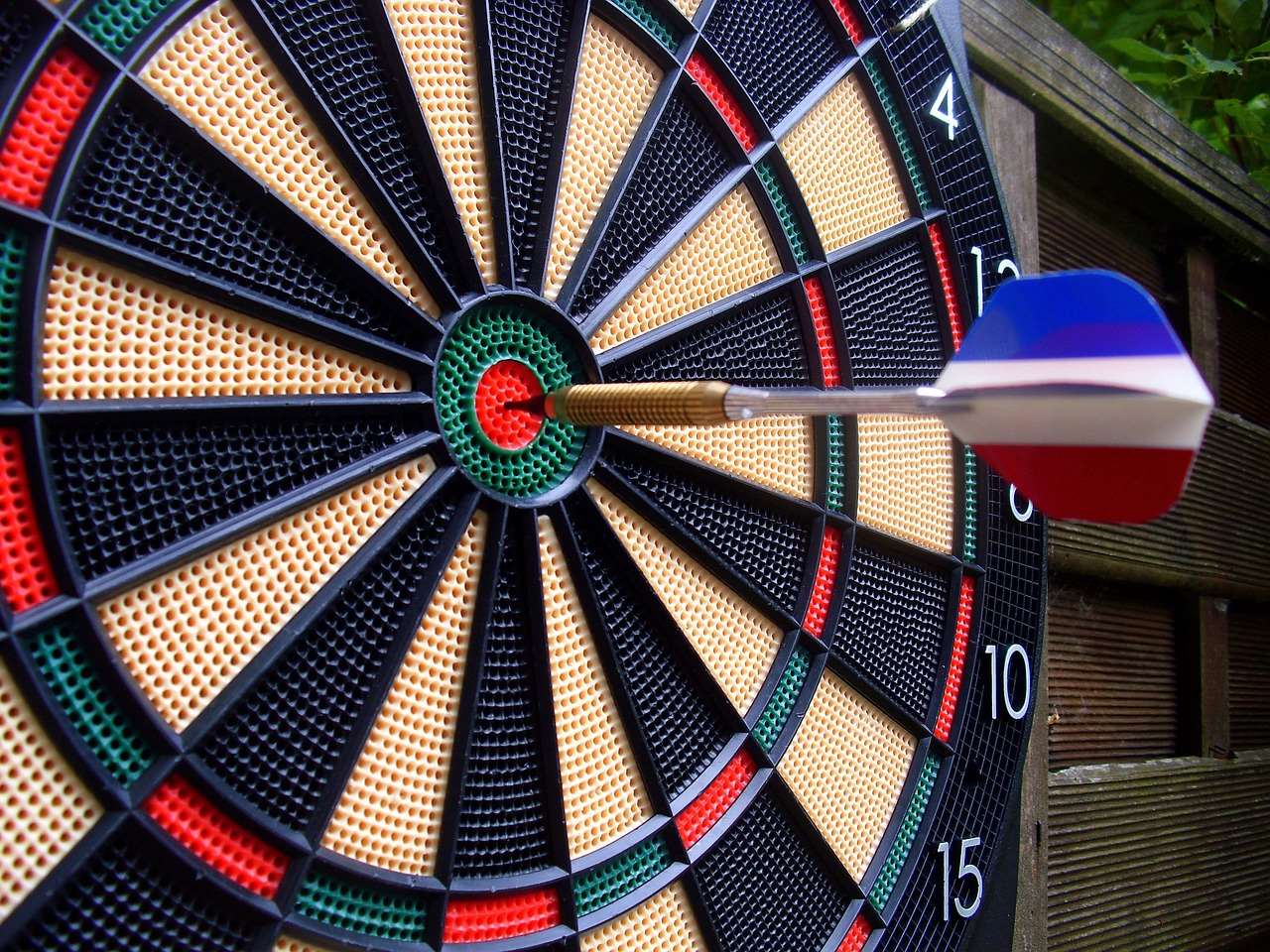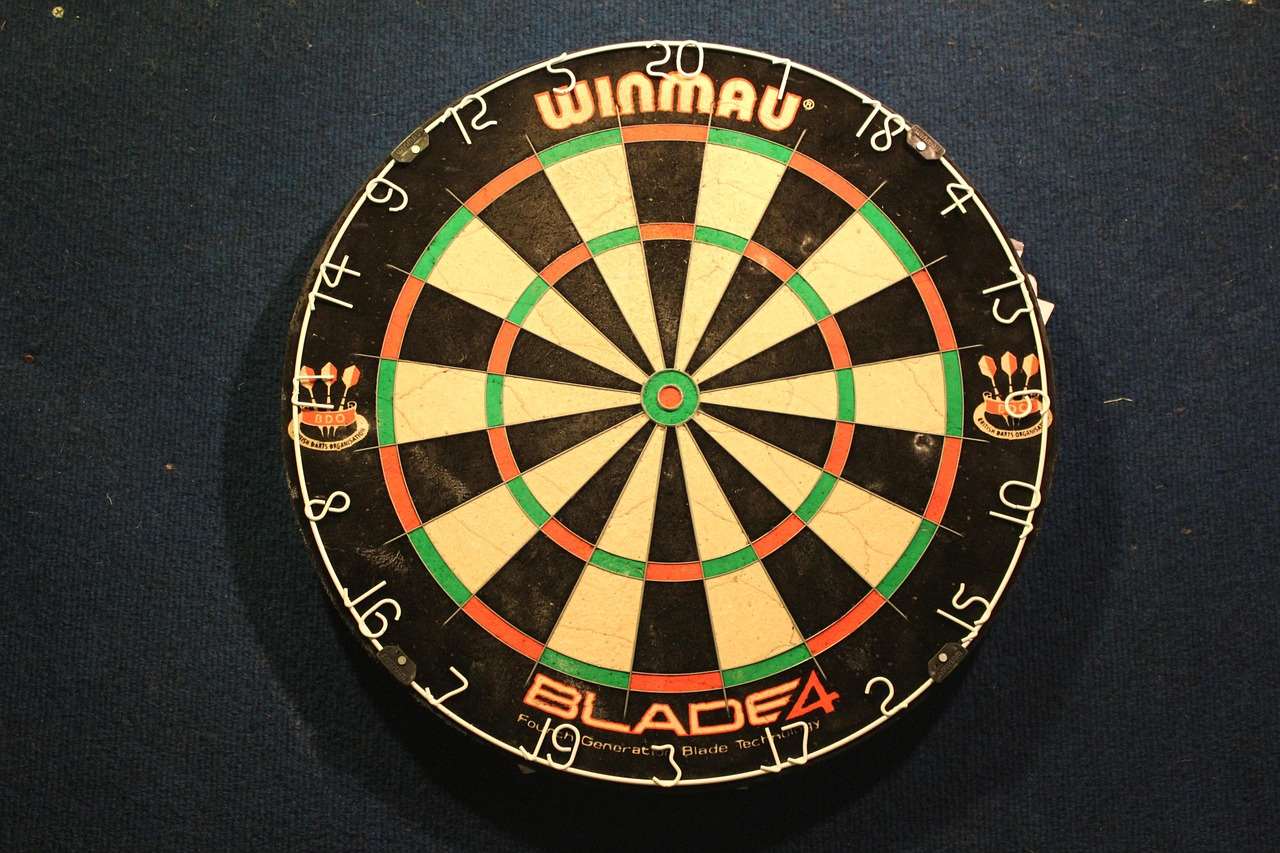Enhance your darts game and prevent injuries by incorporating **darts stretches** into your routine. This article provides essential warm-up and cool-down stretches to improve flexibility, accuracy, and overall performance. We’ll cover targeted stretches for key muscle groups used in dart throwing, along with tips on proper technique and injury prevention.
⚠️ Still Using Pen & Paper (or a Chalkboard)?! ⚠️
Step into the future! The Dart Counter App handles all the scoring, suggests checkouts, and tracks your stats automatically. It's easier than you think!
Try the Smart Dart Counter App FREE!Ready for an upgrade? Click above!
The Importance of **Darts Stretches**
Many dart players underestimate the physical demands of the sport. While it may seem like a simple throwing motion, darts engages a surprising number of muscles, particularly in the arm, shoulder, back, and core. Neglecting to properly warm up and stretch can lead to muscle strains, joint pain, and decreased accuracy. Regularly performing **darts stretches** can significantly reduce the risk of injury and improve your game.
Think of it like any other sport. Athletes in baseball, tennis, or golf all understand the importance of stretching to prepare their bodies for the demands of their respective games. Darts is no different. Incorporating a **stretching routine** into your darts practice will help you play longer, more comfortably, and with greater consistency.

Essential Warm-Up **Darts Stretches**
Before picking up your darts, take a few minutes to prepare your body with these dynamic stretches:
- Arm Circles: Perform small, controlled arm circles forwards and backwards for 30 seconds each. This warms up the shoulder muscles and improves range of motion.
- Wrist Rotations: Gently rotate your wrists clockwise and counter-clockwise for 30 seconds each. This helps to loosen up the wrist joint and improve flexibility.
- Shoulder Shrugs: Shrug your shoulders up towards your ears, hold for a second, and then release. Repeat 10-15 times. This helps to relieve tension in the upper back and shoulders.
- Neck Tilts: Gently tilt your head to the right, bringing your ear towards your shoulder. Hold for a few seconds, then repeat on the left side. This helps to improve flexibility in the neck and upper back.
Remember to perform these stretches slowly and deliberately, focusing on feeling the stretch in the targeted muscles. Avoid any sudden or jerky movements, which can increase the risk of injury. Another key related keyword is **flexibility exercises**.
Targeted Stretches for Dart Throwing
These static stretches focus on the specific muscle groups used in dart throwing. Hold each stretch for 20-30 seconds, and repeat 2-3 times.
- Chest Stretch: Stand facing a doorway, place your forearms on the doorframe, and gently lean forward until you feel a stretch in your chest.
- Triceps Stretch: Reach one arm overhead and bend your elbow, bringing your hand towards your upper back. Use your other hand to gently pull your elbow further, deepening the stretch.
- Forearm Stretch: Extend one arm straight out in front of you, palm facing up. Use your other hand to gently pull your fingers down towards the floor. Repeat with your palm facing down.
- Back Stretch: Sit on the floor with your legs extended in front of you. Reach forward towards your toes, keeping your back as straight as possible. If you can’t reach your toes, grab your shins or ankles.
Focus on breathing deeply and relaxing into each stretch. If you feel any pain, stop immediately. Consider using a **darts score sheet template** to track your progress and identify areas where you may need to focus your stretching efforts.

The Importance of Core Strength and Stability
While arm and shoulder strength are important for dart throwing, core strength and stability are equally crucial. A strong core provides a stable base for your throwing motion, allowing you to generate more power and accuracy. Incorporate exercises like planks, bridges, and Russian twists into your routine to strengthen your core. This will also indirectly benefit from **darts stretches**, because a stable core aids balance during the throw.
Think of your core as the foundation of your throw. If your foundation is weak, your throw will be unstable and inconsistent. Strengthening your core will help you maintain proper posture and balance throughout your throwing motion, resulting in greater accuracy and consistency.
Cool-Down **Darts Stretches** After Playing
After a game of darts, it’s important to cool down and stretch your muscles to prevent stiffness and soreness. Use the same static stretches as you did during your warm-up, holding each stretch for a slightly longer duration (30-45 seconds). Focus on relaxing your muscles and allowing your body to recover.
Don’t skip the cool-down! It’s just as important as the warm-up. Cooling down helps to gradually lower your heart rate and blood pressure, and it also helps to flush out metabolic waste products from your muscles. This will help you recover faster and prevent muscle soreness.
Remember always to use a safe **darts scorekeeper app** to track scores after warming down.
Preventing Injuries with Proper Technique
While **darts stretches** can help to prevent injuries, it’s also important to use proper throwing technique. Avoid using excessive force or jerking your arm during the throw. Instead, focus on using a smooth, controlled motion. If you’re new to darts, consider taking a lesson from an experienced player or watching videos online to learn proper technique.
Many common darts injuries are caused by overuse or improper technique. By using proper technique, you can reduce the stress on your joints and muscles, and you can also improve your accuracy and consistency.

Common Dart Throwing Injuries and How to Avoid Them
Here are some common darts injuries and tips on how to prevent them:
- Shoulder Pain: This is often caused by overuse or poor throwing technique. Make sure to warm up properly, stretch your shoulder muscles, and use a smooth, controlled throwing motion.
- Elbow Pain (Tennis Elbow): This can be caused by repetitive motions and gripping the dart too tightly. Try using a lighter grip and taking breaks to rest your arm.
- Wrist Pain: This can be caused by repetitive wrist motions or improper wrist positioning. Make sure to warm up your wrists properly, stretch your forearm muscles, and use a neutral wrist position during the throw.
- Back Pain: Poor posture or a weak core can contribute to back pain. Focus on maintaining good posture and strengthening your core muscles.
If you experience any pain while playing darts, stop immediately and consult a doctor or physical therapist. Don’t try to play through the pain, as this can worsen the injury.
If your back pain is caused by your dartboard being on the ground, be sure to find the correct **dart board spec** for your official height!
Advanced **Darts Stretches** and Exercises
For more advanced players, consider incorporating these stretches and exercises into your routine to further improve flexibility, strength, and performance:
- Dynamic Stretching: Incorporate more dynamic stretches, such as leg swings, torso twists, and arm swings, into your warm-up.
- Resistance Band Exercises: Use resistance bands to strengthen your shoulder, arm, and back muscles.
- Plyometric Exercises: Incorporate plyometric exercises, such as jump squats and push-ups, to improve explosive power.
Remember to consult with a qualified fitness professional before starting any new exercise program. They can help you design a program that is tailored to your individual needs and abilities.

Listen to Your Body
The most important thing to remember when performing **darts stretches** is to listen to your body. If you feel any pain, stop immediately. Don’t try to push yourself too hard, especially when you’re first starting out. Gradually increase the intensity and duration of your stretches as your body gets stronger and more flexible. Regular, consistent stretching is key to preventing injuries and improving your darts game. It’s even a good idea to check out the specific **darts game rules** as you are doing your stretching.
Consistency is more important than intensity. Even a few minutes of stretching each day can make a big difference in your flexibility and overall health. Make stretching a part of your daily routine, and you’ll be amazed at the results.
Creating a Personalized Stretching Routine
Every dart player is different, so it’s important to create a stretching routine that is tailored to your individual needs and abilities. Consider your age, fitness level, and any existing injuries when designing your routine. You may also want to consult with a physical therapist or athletic trainer to get personalized recommendations. Remember, a personalized routine is more likely to be effective and sustainable in the long run. You can tailor the type of **darts stretches**, repetitions and frequency based on any physical limitations or injuries that you may have.

Experiment with different stretches and exercises to find what works best for you. Don’t be afraid to modify your routine as needed. The most important thing is to find a routine that you enjoy and that you can stick with over the long term.
The Long-Term Benefits of Consistent Stretching
Committing to regular **darts stretches** provides benefits beyond just injury prevention. Improved flexibility and range of motion can lead to a more fluid and consistent throwing motion, potentially increasing your accuracy and overall performance. Additionally, stretching can help reduce stress and improve circulation, contributing to a more relaxed and focused mental state during gameplay. A good mental state is especially vital when remembering **darts checkout names**.
Conclusion
Incorporating **darts stretches** into your routine is crucial for preventing injuries, improving flexibility, and enhancing your overall performance. Remember to warm up before playing, stretch targeted muscle groups, cool down afterwards, and listen to your body. By making stretching a regular part of your darts practice, you can enjoy the game for years to come. Take the time to properly prepare your body, and you’ll see a significant improvement in your game and a reduction in your risk of injury. Remember to make stretching and preparation part of your daily practice. Want to take your game to the next level? Start implementing these **darts stretches** today and experience the difference!
Learn all about the perfect dartboard and stand for your new darts stretches.
Hi, I’m Dieter, and I created Dartcounter (Dartcounterapp.com). My motivation wasn’t being a darts expert – quite the opposite! When I first started playing, I loved the game but found keeping accurate scores and tracking stats difficult and distracting.
I figured I couldn’t be the only one struggling with this. So, I decided to build a solution: an easy-to-use application that everyone, no matter their experience level, could use to manage scoring effortlessly.
My goal for Dartcounter was simple: let the app handle the numbers – the scoring, the averages, the stats, even checkout suggestions – so players could focus purely on their throw and enjoying the game. It began as a way to solve my own beginner’s problem, and I’m thrilled it has grown into a helpful tool for the wider darts community.